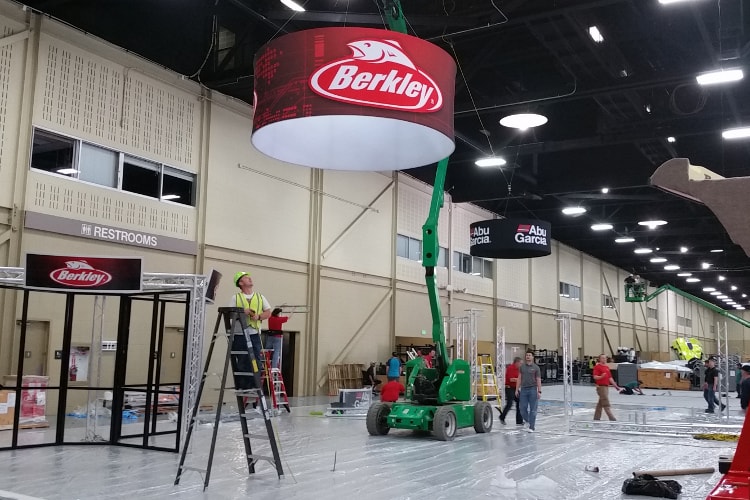
Planning for a trade show can be hectic. It requires a lot of time and money. You need to think about things such as the size of your booth space, the booth location, budget, graphic design, brochures, and staffing.
Here are the top 8 trade show mistakes to avoid:
- Exhibiting at the wrong trade show
- Not setting the appropriate trade show budget
- Adding too much info into their graphic
- No storage
- Not setting goals
- Not marketing before the show
- Not bringing the A-team
- Not following up on leads
1. Exhibiting at the wrong trade show
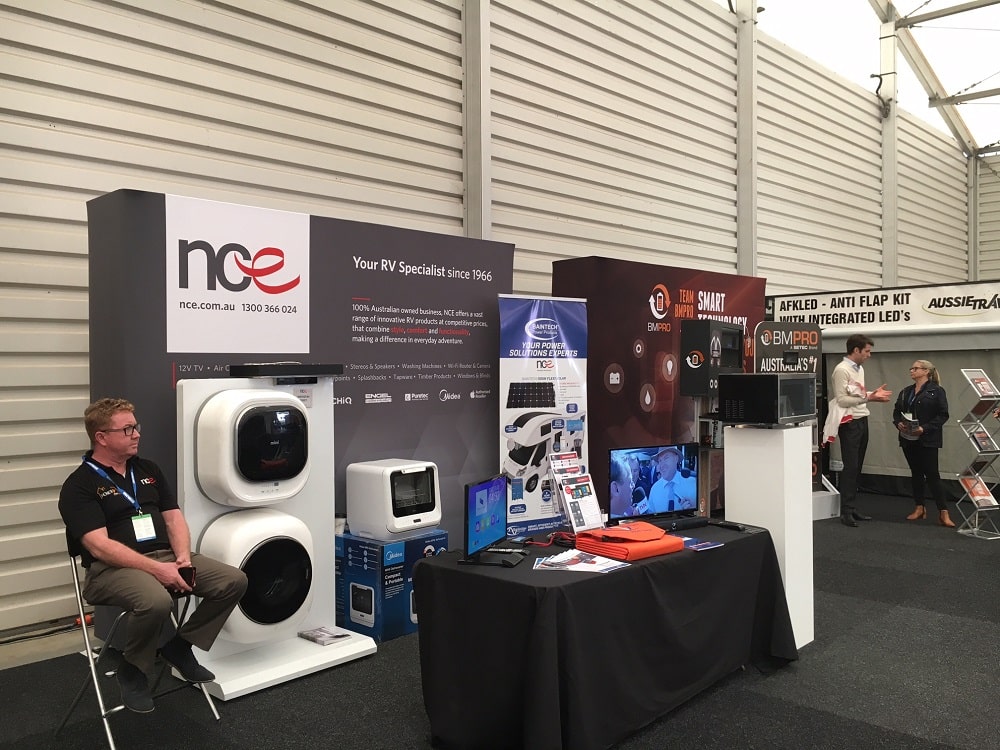
There is at least one trade show for every industry. Some of the most common types of trade shows are tech trade shows like CES, beauty expos, and travel expos. You can also find the most unexpected trade shows like the Wild Deer and Duck Hunting Expo.
So, which trade shows do you exhibit at?
Here are a few factors to consider when selecting a trade show:
- Type of trade show – Is it a consumer or industry trade show? In other words, is it a B2C or B2B trade show?
- Type of attendees – How many attendees were at last year’s show? Who are those attendees? Are they mostly decision-makers? This is important if you are selling B2B.
- Budget for booth space – Don’t forget that booth space is just one part of the total cost to your trade show. You need to factor in other costs such as the exhibition stand, marketing collaterals, and staff costs.
- The reputation of the show – Journalists from the biggest media outlets will always attend the most reputable show in an industry over the less reputable one. That is an opportunity for your brand to get in front of the media. For example, tech journalists will attend CES over a no-name tech show.
You can learn more about choosing the right trade shows to exhibit at here.
2. Not setting the appropriate trade show budget
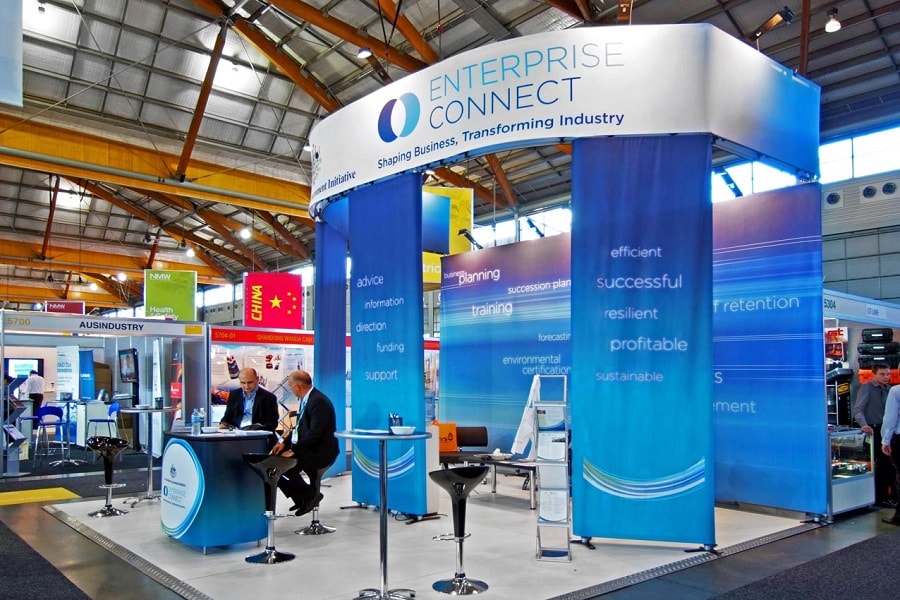
According to Exhibitor Online, 33% of exhibitors’ trade show budget is spent on the booth space. This doesn’t include the exhibition stand, staff costs, show services, and logistics.
For example, for staff costs, you have to take into account their salary, training, and accommodation. For show services, some organizers might not include utilities and WiFi into your booth space rental cost so that is something you need to factor into your budget.
Your logistics cost will differ greatly depending on the type of stand you choose. For example, if you were going for a custom stand, your shipping costs might cost a lot more compared to a modular exhibition stand like TRIGA®. Some other logistics costs include storage, customs, and insurance.
You can read more about budgeting for your trade shows here.
3. Adding too much info into their graphic
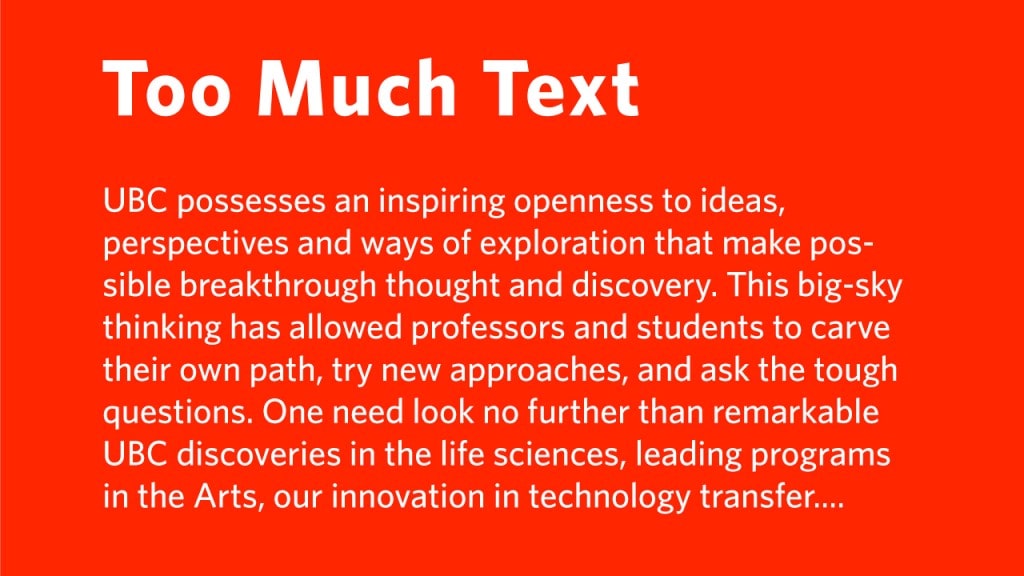
Graphic clutter is one of the most common beginner’s mistakes, especially for first-time exhibitors.
The first type of clutter is information clutter. Designers or managers with lack of design experience would want to add as much information into their graphic as possible. They think that the more information they add, the more information they can get across to their prospects. In reality, it is the opposite. The more information you add in your graphic, the less likely your prospects are going to read them. Your prospects are just going to walk past your booth not knowing what your company does.
The second type of clutter is messaging clutter. Most of the time, their messaging is all over the place.
Here is an example of a messaging for a travel agent that is all over the place:
Cheap travel agent for students.
Luxury travel agent for retirees.
Software to help you plan your travel plans.
Financial planning services so you can travel more!
Are they a budget travel agent? Are they a travel agent focusing on luxury travel? Are they a software provider in the travel industry? Are they a financial planner?
The third type of clutter is photo clutter. They add as many photos as they can fit into their 3m by 3m booth thinking it will make it look nice and lively. However, most of the time, one very good image does a much better job than 100 images.
The solution is to sit down and brainstorm a clear and concise message that your prospects can understand within 3 seconds and combine that with a superb photo that is able to grab your prospect’s attention when they are walking past your booth. Don’t forget that there are other exhibitor booths competing for the attendees’ attention.
4. No storage
Storage is important to keeping your booth neat, free of clutter, and looking professional. You need a place for your booth staff to keep all their belongings and the boxes of brochures and other marketing collateral which you ordered for the trade show.
Here are four storage ideas for your exhibition stands:
Storage idea 1: Under a trestle table with a printed tablecloth over it. (Most affordable).
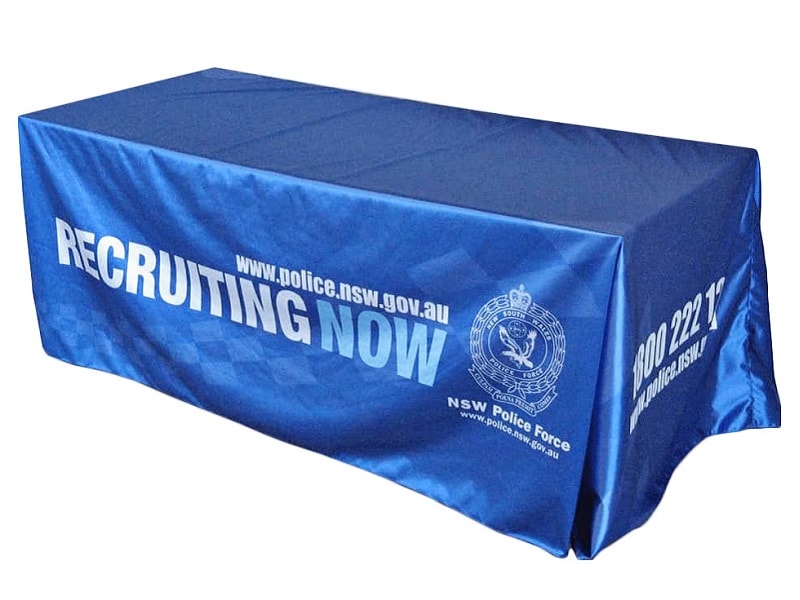
Storage idea 2: Portable counter with built-in storage (Average).
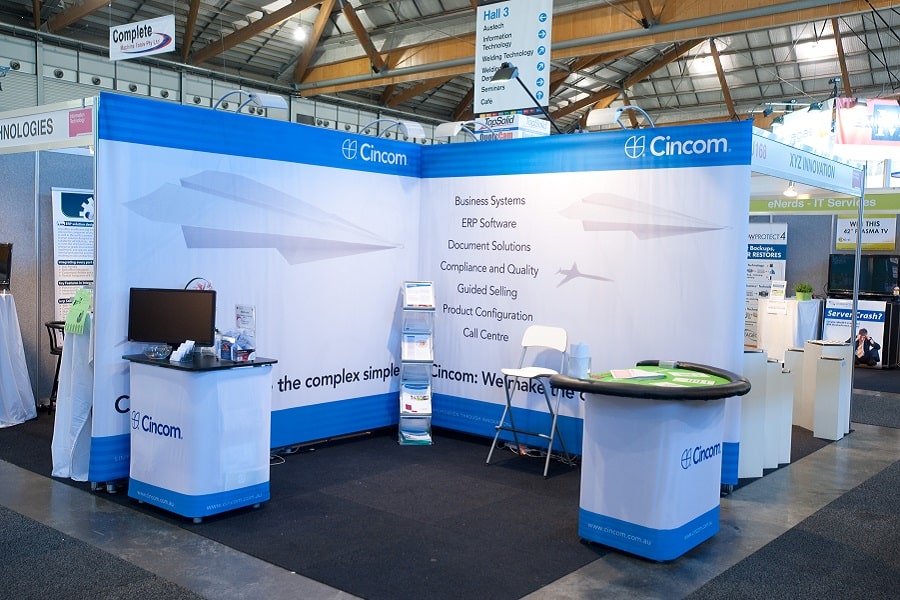
Storage idea 3: Built-in cabinetry in your exhibition stand’s walls (Expensive).
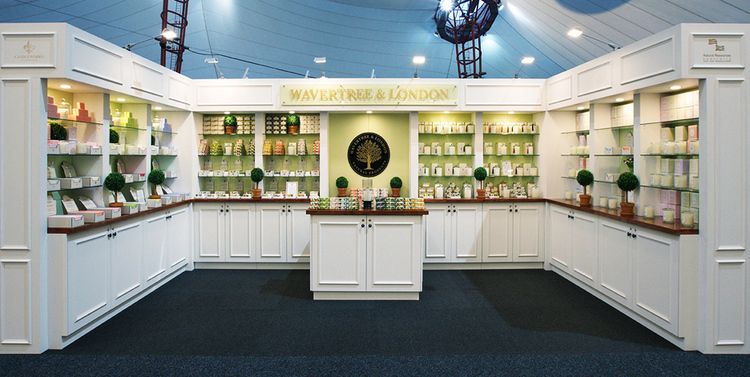
5. Not setting goals
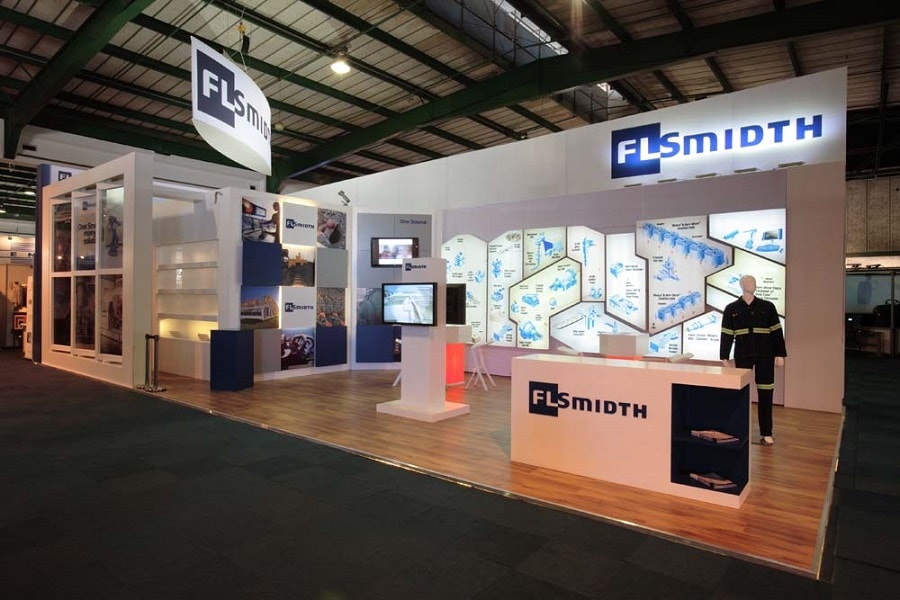
According to Exhibitor Media Group, only 35% of exhibitors measure their trade show leads conversion rate to a closed sale.
If you don’t set goals, you and your team are most probably not going to know if the trade show was a success. It goes back to the saying, if you can’t measure it, you can’t improve it.
A goal doesn’t have to be complicated. It can be as simple as “Get 50 leads” or “Win 5 new clients” or it could even be a non-financial goal such as “Strengthen relationship by talking to 10 existing clients and 100 new prospects”.
You can read more about measuring trade show results here.
6. Not marketing before the show
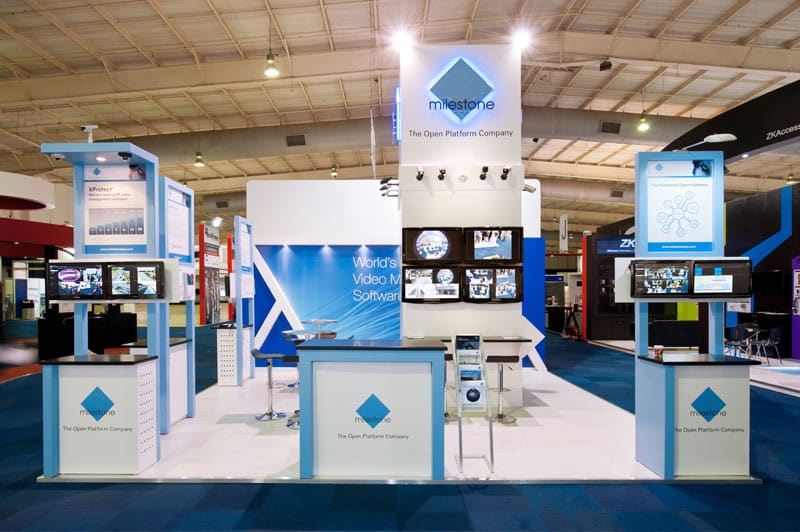
The expo organiser’s job is to get attendees to the show. Their job isn’t to get them to your booth. It is your job to get them to your booth.
The mistake most first time exhibitors make is they count on hope marketing where they show up and think the attendees will walk towards their booth to learn about their products and services.
Experienced exhibitors understand this and they start promoting that they will be at the show months before the event and they keep promoting until the date itself.
With that said, 85% of exhibitors use pre-show marketing. Don’t be the other 15%.
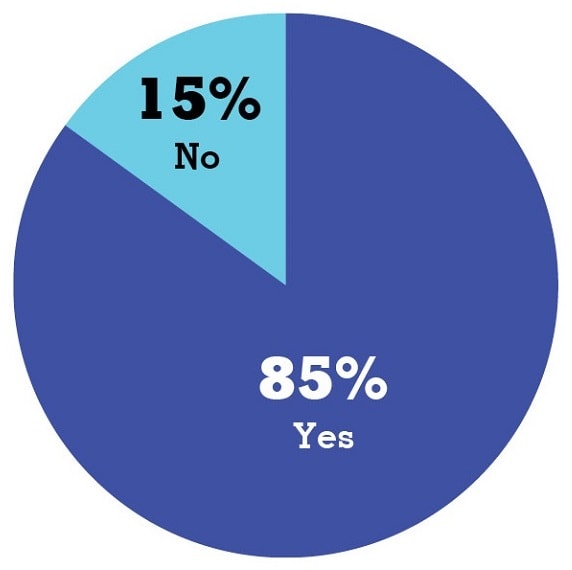
Here is another statistic – 82% of exhibitors experienced increased booth traffic because of pre-show marketing.
You can read more about pre-show marketing here.
7. Not bringing the A-team
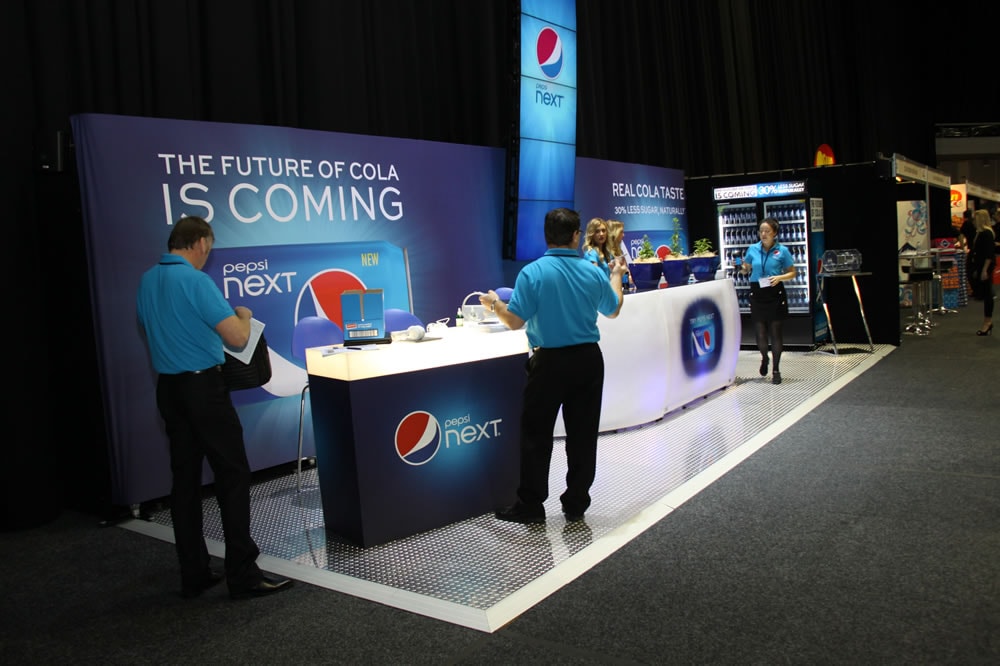
Your booth staff might be the most or one of the most important determinants in the success of your trade show, especially in a B2B trade show. The staff you select to man your booth will be the face of your brand throughout the show.
First-time exhibitors might hire temporary workers or interns to man their booth and their goal is to give out business cards and brochures. However, what they don’t realise is the staff in your booth will be the face of your brand during the show. Every time a potential client walks up to your temporary staffers and asks a question related to your product or business and when the temporary staffers can’t answer the question, that opportunity is gone. Getting your permanent staff to get back to them one week later won’t work.
Here are six characteristics of the ideal booth staff.
- They know how to qualify attendees.
- They know how to engage attendees without sounding like a used car salesman.
- They know how to extract and identify an attendee’s pain points.
- They know how to sell the right solution based on the attendee’s pain points.
- They know basic trade show etiquette.
- They have the right attitude.
You can more about choosing the right booth staff here.
8. Not following up on leads
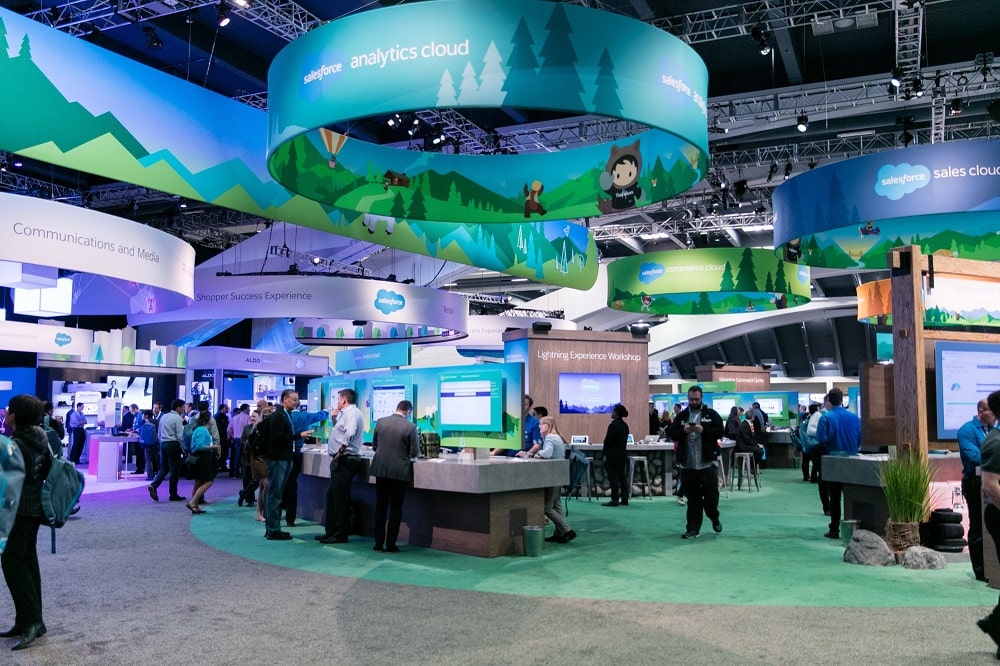
After spending all that money on the booth space, the stand, and the marketing collaterals, now is time to make sure that investment goes further by following up on leads that you acquired during the show.
Salesforce Training did a survey on how many exhibitors followed up on leads acquired during the trade show. They found out that only 15% of exhibitors followed up on their leads. Out of that 15%, some exhibitors took over 50 days to do so.
A lot of salespeople expect that by exhibiting in the trade show, the clients would close themselves. However, in reality, a trade show is there to open up opportunities for exhibitors to get more clients. The sales team will still need to put in the work to close those leads. Those leads aren’t going to close themselves unless you have an extraordinary product that is out of this world and clients are banging down your door and begging you to take their money.
You can read more about how to convert trade show leads to clients here.
Summary
The top 8 trade show mistakes we covered in this post are:
- Exhibiting at the wrong trade show
- Not setting the appropriate trade show budget
- Adding too much info into their graphic
- No storage
- Not setting goals
- Not marketing before the show
- Not bringing the A-team
- Not following up on leads